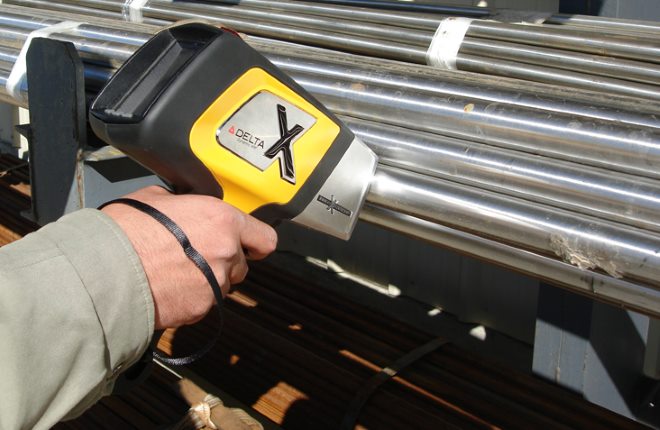
Stainless steel is magnetized or not: how to identify stainless steel
Given that fact, that stainless steel is now available in a wide variety of brands, it is impossible to answer the question unequivocally, whether it is magnetized or not. The magnetic properties of stainless steels depend on the chemical composition and, in accordance, from the internal structure of alloys.

Portable metal analyzer allows you to quickly determine the content of chemical elements and draw conclusions about the quality of stainless steel
What determines the magnetic properties of materials
Magnetic field with a certain level of intensity (N) acts on the bodies placed in it in this way, which magnetizes them. The intensity of such magnetization, which is denoted by the letter J, directly proportional to the field strength. In the formula, which calculates the intensity of magnetization of a substance (J =? H), the coefficient of proportionality is also taken into account? - magnetic susceptibility of the substance.
Depending on the value of this factor, all materials can fall into one of three categories:
- paramagnetics - coefficient? more than zero;
- Diamagnet -? is zero;
- ferromagnets - substances, whose magnetic susceptibility is significant (such substances, to which, in particular, include iron, cobalt, nickel and cadmium, able to actively magnetize, even when placed in weak magnetic fields).
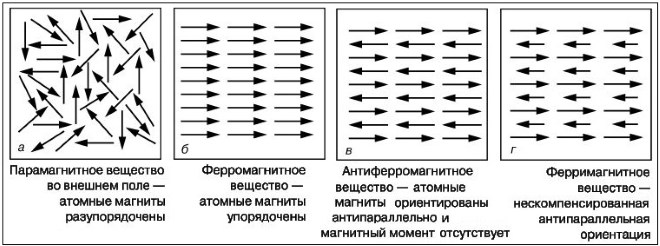
Directions of action of magnetic moments of neighboring atoms in substances of different magnetic nature
Magnetic properties, which has stainless steel, also related to its internal structure, which may include austenite, ferrite and martensite, as well as their combinations. The magnetic properties of stainless steel are affected as the phase components themselves, so and so, in what proportion they are in the internal structure.
Stainless steels with good magnetic properties
Stainless steel has good magnetic properties, in which such phase components prevail:
- Martensite - is a ferromagnet in its pure form.
- Ferrite - this phase component of the internal structure of stainless steel, depending on the heating temperature can take two forms. Such a structural form becomes a ferromagnet in that case, if the steel is heated to temperature, below the Curie point. If the heating temperature of stainless steel is above this point, then the alloy begins to be dominated by high-temperature delta-ferrite, which is a pronounced paramagnetic.
From all the above we can conclude that, magnetized and stainless steel, in the internal structure of which martensite predominates. As well as usual carbon steels, such alloys react to the magnet. On this basis, they can be distinguished from non-magnetic.
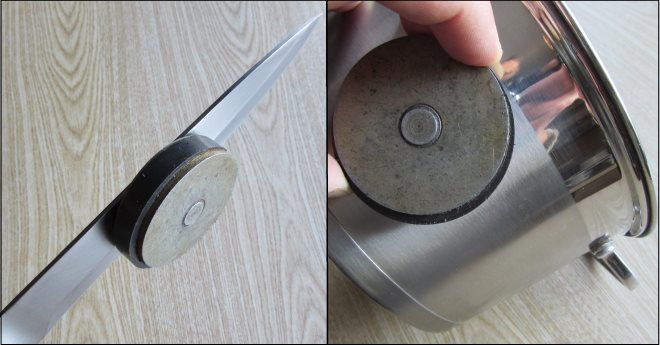
The ability of stainless steel to be magnetized does not affect its corrosion resistance
Stainless steel, in which ferrite or its mixture with martensite predominates, most often also belong to the ferromagnet, but their properties may differ depending on the ratio of the phase components of their internal structure.
Stainless steel, whose magnetic properties may change, Are mainly chromium and chromium-nickel alloys, which may belong to one of the following groups.
martensitic
Steels with martensitic internal structure, which, as well as usual carbon, can be strengthened by hardening and tempering. Taka stainless steel, except for general mechanical engineering enterprises, actively used in everyday life (in particular, it is used to make cutlery and cutting tools). Among the most common brands of such magnetic steels, products from which are made with heat treatment and can be subjected to finishing grinding and polishing, include 20X13, 30Х13, 40Х13.

Steel grade 30X13 is less ductile, than alloy 20X13, despite the similar composition (click to enlarge)
This category also includes an alloy brand 20X17H2, which has a high content of chromium in its chemical composition, which significantly enhances its corrosion resistance. Why such stainless steel is popular? The point is, what, in addition to high corrosion resistance, it is characterized by excellent machinability by cold and hot stamping, cutting methods. in addition, products from such material are well welded.
ferrite
Common magnetic steel ferrite type, which due to the low carbon content in its chemical composition is more soft, than martensitic alloys, is 08Х13, actively used in food production. Products and equipment are made of such stainless steel, designed for washing, sorting, grinding, sorting, as well as transportation of food raw materials.
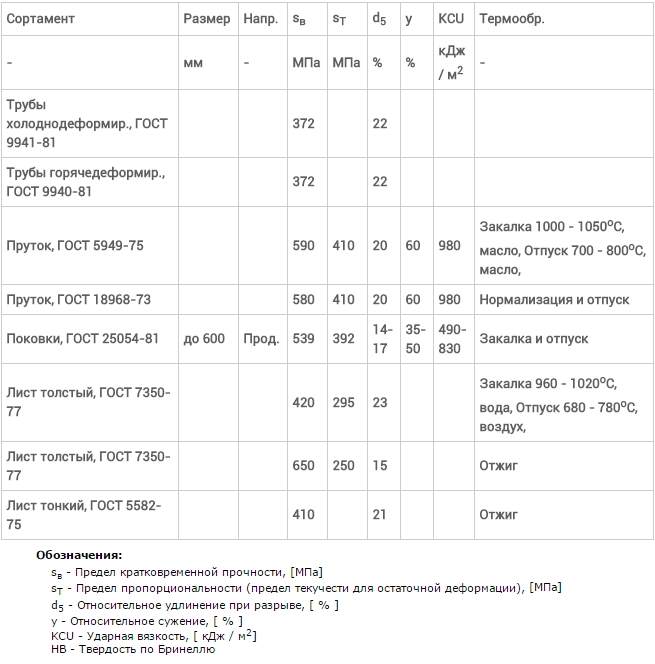
Mechanical properties of steel 08X13
Martensitic-ferritic
The most popular brand of magnetic stainless steel, whose internal structure consists of martensite and free ferrite, is 12x13.
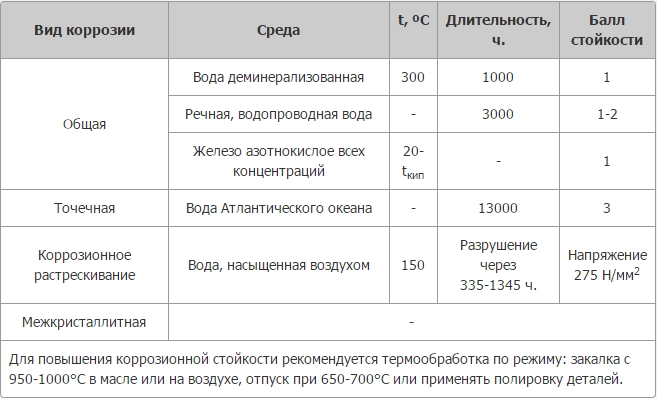
Corrosion resistance of steel grade 12X13 (another name 1X13)
Stainless steel, that do not have magnetic properties
To stainless steels, not magnetized, include chromium-nickel and chromium-manganese-nickel. They are divided into several groups.
austenitic
The most popular brand of such stainless steels, which occupy a leading place among non-magnetic steel alloys, is 08Х18Н10 (international analogue according to the AISI classification 304). Steels of this type, which also include 08X18H10, 08Х18Н10Т, 12Х18Н10Т, 10Х17Н13М2Т, are actively used in the manufacture of equipment for the food industry; kitchen utensils and cutlery; plumbing equipment; containers for food liquids; elements of refrigeration equipment; containers for food; medical supplies, etc..
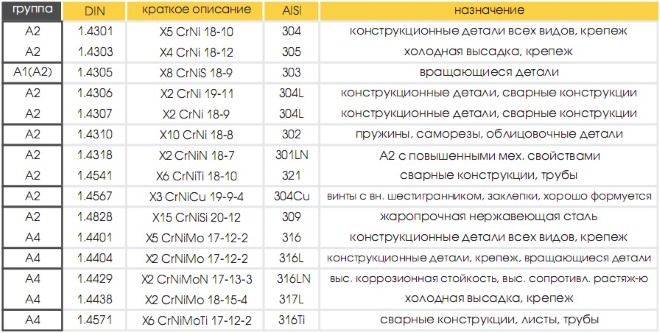
Composition and application of austenitic steels
The great advantages of this stainless steel, which does not have magnetic properties, - it is its high corrosion resistance, which demonstrates in many aggressive environments, and manufacturability.
Аустенітно-ферритні
Became this group, the most popular brands of which are 08Х22Н6Т, 08Х21Н6М2Т and 12Х21Н5Т, have a high content of chromium, as well as low nickel content. To give such stainless steel the necessary characteristics (optimal combination of high strength and good ductility, resistance to intergranular corrosion and corrosion cracking) the following elements are introduced into its chemical composition, like copper, molybdenum, titanium or niobium.
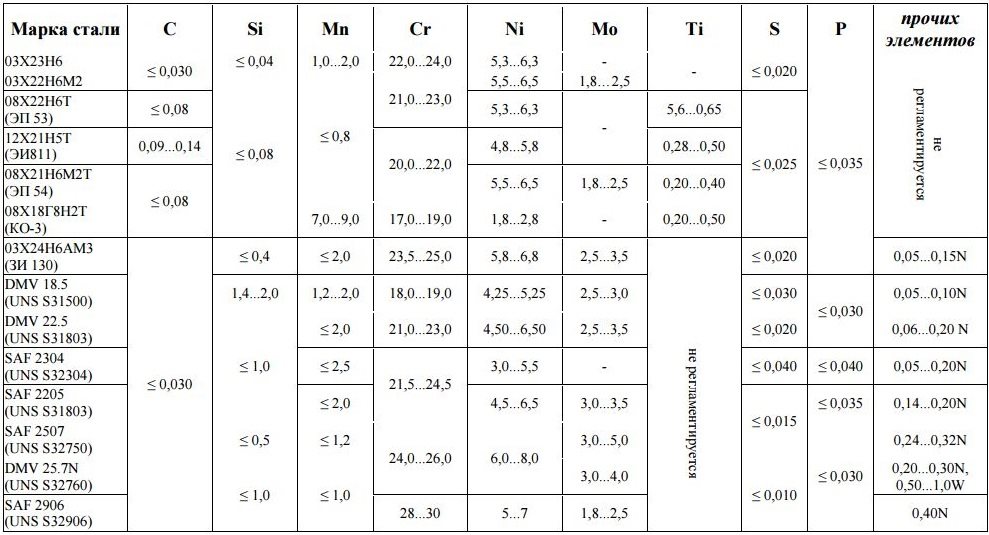
Chemical composition of some industrial brands of austenitic-ferritic steels (click to enlarge)
In addition to those listed above, to stainless steels, which are magnetized, alloys of austenitic-martensitic and austenitic-carbide structure are put.
How to determine, whether magnetic or non-magnetic stainless steel
Given all the above, we can draw the following conclusion: even if the steel has magnetic properties, it does not mean at all, that it cannot be attributed to stainless steel alloys. There is a fairly simple way, allowing you to check, whether magnetic steel is stainless steel. To determine this, it is necessary to clean the surface area, tested products to metallic luster, and then apply a few drops of concentrated copper sulfate on this area.
To you, that in front of you is stainless steel, will indicate a plaque of red copper, which will cover the cleaned area. This simple method allows you to very accurately determine, whether the magnetic steel is stainless. But check (and especially to determine at home), whether stainless steel belongs to the category of food, practically impossible.
If you decide to check, whether magnetic steel is stainless or not, keep in mind, what are its properties, as the ability to magnetize, do not impair its corrosion resistance.




